Navigation
Install the app
How to install the app on iOS
Follow along with the video below to see how to install our site as a web app on your home screen.
Note: This feature may not be available in some browsers.
More options
You are using an out of date browser. It may not display this or other websites correctly.
You should upgrade or use an alternative browser.
You should upgrade or use an alternative browser.
From a ranch, but HOLY CRAP!
- Thread starter Hilljackoutlaw
- Start date
brocksw
Well-known member
Hunting Wife
Well-known member
Whatever you say Bill. You’re the one who brought selective breeding into discussion.I never suggested equal probability or, if unequal, which was more probable. I simply suggested that looking at antlers characteristics should not be used diagnostically in such a manner, particularly “100%” which was in the post that I quoted. Now you’ve corrected me TWICE about things I never said.
If you wondered, I don’t generally consider high fence animals to be the same animals as their wild counterparts, and don’t generally consider high fence hunting to be hunting in the same sense as low fence hunting. I wouldn’t go as far as to say that I think it should be 100% illegal, but I don’t like it, and I think it should be more restricted than it currently is.
Don’t really care what you think about high fence animals, nor did I imply such.
Last edited:
ImBillT
Well-known member
- Joined
- Oct 29, 2018
- Messages
- 3,921
I didn’t bring selective breeding into the discussion. People mentioned introducing red stags into the equation before I ever posted. If introducing a different subspecies doesn’t constitute selective breeding I don’t know what does. You’re 0/3.Whatever you say Bill. You’re the one who brought selective breeding into discussion.
Don’t really care what you think about high fence animals, nor did I imply such.
I didn’t say you cared. My first sentence in that paragraph said “if”. You’re now 0/4. I included my opinion about high fences just in case you or anyone else reading might be misunderstanding my position on the issue. Since you’ve misunderstood every other post I’ve made in this thread it’s entirely reasonable to assume you COULD HAVE misunderstood my position on high fences.
I’ve been wrong before. I’m gonna be wrong again. When you correct someone could you try to correct them about something they actually said?
Last edited:
Hunting Wife
Well-known member
Challenge accepted.When you correct someone could you try to correct them about something they actually said?
You’re backpedaling now Bill. Hybridization and selective breeding are not the same thing in this discussion, and you know it. This now seems to contradict your previous statements:If introducing a different subspecies doesn’t constitute selective breeding I don’t know what does.
I’m sure they are elk genes….
Emphasis mine in this one, which introduced selective breeding to the discussion, seemingly as an alternative to red deer hybridization:…Unusual antler characteristics that are extremely uncommon/absent in the wild occur on high fence operations without requiring breeding with other subspecies.
…High fence operations that selectively breed, or import animals with large antlers, end up with pretty funky antlers in relatively few generations. While those aren’t antlers that are likely to occur in a more natural setting, I don’t think it necessarily indicates breeding with red stags.
My position remains that if a high fence operation, in an industry with a long history of crossing red deer with elk, is producing animals with red deer traits, it is far more likely those animals have red deer genes than those traits being artificially selected from random mutations, which seems to be what you are suggesting with your above statements.
Simply put, I did not.If you wondered,…
Score this however you like. Not sure how you fell off my ignore list to begin with, but I’m putting you back on it.
Apologies @Hilljackoutlaw for the derailment.
Last edited:
D
Deleted member 28227
Guest
A hunting buddy worked for years at a high fence operation in CO.I didn’t bring selective breeding into the discussion. People mentioned introducing red stags into the equation before I ever posted. If introducing a different subspecies doesn’t constitute selective breeding I don’t know what does. You’re 0/3.
I didn’t say you cared. My first sentence in that paragraph said “if”. You’re now 0/4. I included my opinion about high fences just in case you or anyone else reading might be misunderstanding my position on the issue. Since you’ve misunderstood every other post I’ve made in this thread it’s entirely reasonable to assume you COULD HAVE misunderstood my position on high fences.
I’ve been wrong before. I’m gonna be wrong again. When you correct someone could you try to correct them about something they actually said?
He said all elk that have crowns like that are Red Deer-hybrids, period. The ‘elk’ on the property he worked were hybrids.
You can see registered bulls on various “elk farming” websites. I haven’t seen a straight elk that has that kinda genetics.
Also they are not the same species.

What’s the difference between red deer and elk?
Shortly after Europeans landed on the shores of the new world, they encountered a creature that looked a lot like a bigger version of the [...]

A phylogenetic comparison of red deer and wapiti using mitochondrial DNA - PubMed
A phylogeny was constructed for red deer/wapiti (Cervus elaphus) subspecies using sequence data from the control region of mitochondrial DNA (mtDNA). The tree was rooted using Cervus nippon (sika deer), Cervus albirostris (Thorold's white-lipped deer), and several Odocoileinae species. A...
Last edited by a moderator:
noharleyyet
Well-known member
“Like separating fly shit from pepper.”
-JLS
-JLS
That's kind of like "catching" the biggest fish at the seafood market.648 inches is crazy! I wish there was more pics.

Possible Record Bull Elk Bagged by Grays Harbor County Man - The Daily Chronicle
Hoquiam’s Brian Dhoogie bagged this possible record elk while hunting on the 10,000-acre property at Broadmouth Canyon Ranch in Idaho about two weeks ago. He brought the meat from the animal …www.chronline.com
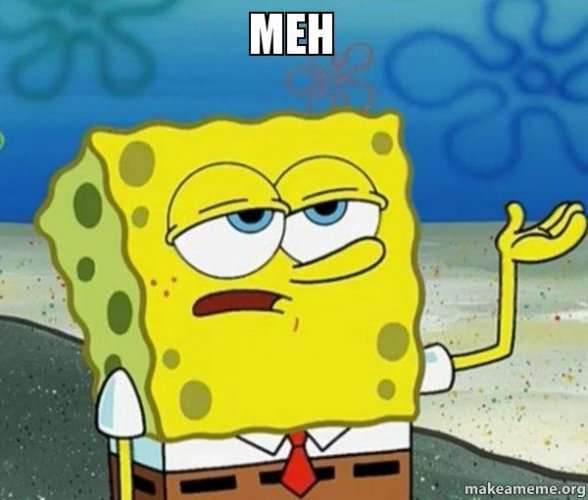
ImBillT
Well-known member
- Joined
- Oct 29, 2018
- Messages
- 3,921
First, it wasn’t backpedaling, but it was poorly chosen. Drive-by commenting from a cell phone isn’t the best way to avoid mistakes during discussions. Yes, I’d say introducing red deer would qualify as selective breeding, even though I’m saying I don’t think introducing red deer is a requirement for achieving red deer like antler growth. I don’t think they should be referred to as hybrids either since they’re basically the same animal, but perhaps it’s not the worst way to describe the breeding of elk and red deer. Again, a very poor bit of information in terms of making my point.Challenge accepted.
You’re backpedaling now Bill. Hybridization and selective breeding are not the same thing in this discussion, and you know it. This now seems to contradict your previous statements:
Emphasis mine in this one, which introduced selective breeding to the discussion, seemingly as an alternative to red deer hybridization:
My position remains that if a high fence operation, in an industry with a long history of crossing red deer with elk, is producing animals with red deer traits, it is far more likely those animals have red deer genes than those traits being artificially selected from random mutations, which seems to be what you are suggesting with your above statements.
Simply put, I did not.
Score this however you like. Not sure how you fell off my ignore list to begin with, but I’m putting you back on it.
Apologies @Hilljackoutlaw for the derailment.
“I’m sure they’re elk genes”. I made this statement in response to a person whose comment was essentially suggesting that it might be a GMO organism. Again, red deer and elk, basically the same thing even though they can be distinguished from one another.
Yes I think it’s entirely possible to get red deer like antlers from elk without introducing red deer into the equation. Has it happened? I don’t know.
Your position regarding probability does not conflict with mine. I never introduced probability into the equation EXCEPT to say that crowing should not be considered 100%(quoted someone else) indicative of having been bred with red deer.
If I’m lucky, I’m already back on your ignore list.
Last edited:
ImBillT
Well-known member
- Joined
- Oct 29, 2018
- Messages
- 3,921
Being able to breed and produce fertile offspring is an accepted definition of a species. Yes, there are ways to define a species more narrowly than that, and those were developed specifically for instances like elk/red deer. You can clearly see they’re different, yet, that difference is not accounted for with the above definition of species. Regardless of what definition you want to use, they had the same starting point, and their dna is still very, very similar.A hunting buddy worked for years at a high fence operation in CO.
He said all elk that have crowns like that are Red Deer-hybrids, period. The ‘elk’ on the property he worked were hybrids.
You can see registered bulls on various “elk farming” websites. I haven’t seen a straight elk that has that kinda genetics.
Also they are not the same species.

What’s the difference between red deer and elk?
Shortly after Europeans landed on the shores of the new world, they encountered a creature that looked a lot like a bigger version of the [...]www.rmef.org

A phylogenetic comparison of red deer and wapiti using mitochondrial DNA - PubMed
A phylogeny was constructed for red deer/wapiti (Cervus elaphus) subspecies using sequence data from the control region of mitochondrial DNA (mtDNA). The tree was rooted using Cervus nippon (sika deer), Cervus albirostris (Thorold's white-lipped deer), and several Odocoileinae species. A...pubmed.ncbi.nlm.nih.gov
I remain unconvinced that a captive elk breeding program could not get red deer like antler characteristics without introducing actual red deer into the mix. I’m not saying you’d stumble upon antlers identical to those of a red deer with little to effort involved, or perhaps even at all. I’m saying that antlers with some characteristics of red deer antlers could occur. For crying out loud, the bull this entire thread is about doesn’t have antlers that look just like a red stag’s. His antlers are a nasty mess. A nasty mess not unlike the nasty messes that show up on high fence whitetail properties. Was he bred with a red deer? Maybe. I don’t think you can look at him and declare with 100% certainty that he has a red deer lineage.
D
Deleted member 28227
Guest
@BrentD care to weigh in on the science here?Being able to breed and produce fertile offspring is an accepted definition of a species. Yes, there are ways to define a species more narrowly than that, and those were developed specifically for instances like elk/red deer. You can clearly see they’re different, yet, that difference is not accounted for with the above definition of species. Regardless of what definition you want to use, they had the same starting point, and their dna is still very, very similar.
Here's what I'm saying, sure maybe it's possible, but red deer hybridization is super common in the industry, there are numerous examples, and it's been a problem with hybrid animals escaping, for decades.I remain unconvinced that a captive elk breeding program could not get red deer like antler characteristics without introducing actual red deer into the mix. I’m not saying you’d stumble upon antlers identical to those of a red deer with little to effort involved, or perhaps even at all. I’m saying that antlers with some characteristics of red deer antlers could occur. For crying out loud, the bull this entire thread is about doesn’t have antlers that look just like a red stag’s. His antlers are a nasty mess. A nasty mess not unlike the nasty messes that show up on high fence whitetail properties. Was he bred with a red deer? Maybe. I don’t think you can look at him and declare with 100% certainty that he has a red deer lineage.
So given the reality of the high fence industry... practices/methods, it's more likely a hybrid than not.
I’m saying that antlers with some characteristics of red deer antlers could occur. For crying out loud, the bull this entire thread is about doesn’t have antlers that look just like a red stag’s
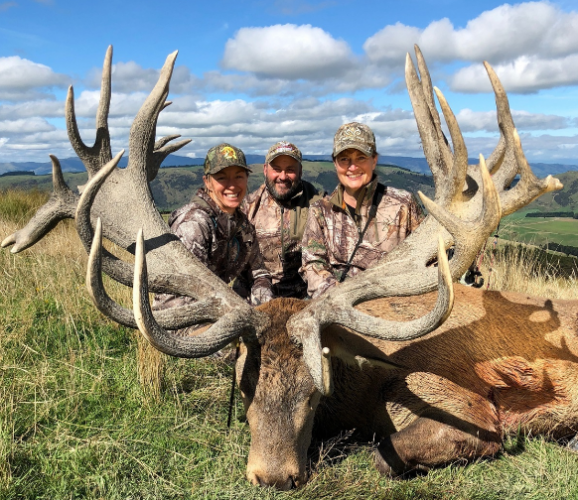
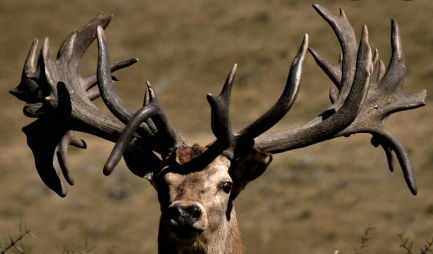
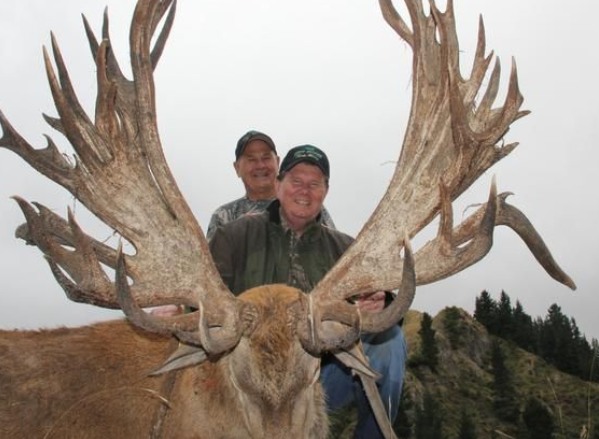
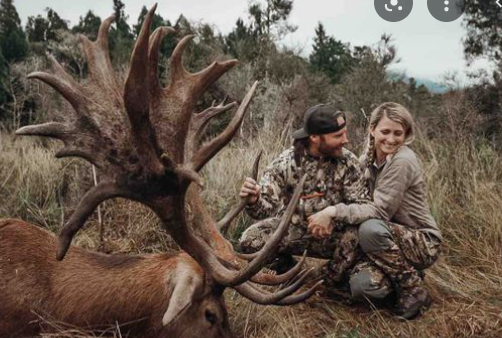
That bull looks waaaay closer to these red deer than any Apache giant or free range elk I've seen.
Last edited by a moderator:
Carl 9.3x62
Well-known member
For what it's worth, wild free range Red deer don't look like these either. I'm sure all of these deer are estate/captive deer.@BrentD care to weigh in on the science here?
Here's what I'm saying, sure maybe it's possible, but red deer hybridization is super common in the industry, there are numerous examples, and it's been a problem with hybrid animals escaping, for decades.
So given the reality of the high fence industry... practices/methods, it's more likely a hybrid than not.
View attachment 245648View attachment 245649View attachment 245650View attachment 245651
That bull looks waaaay closer to these red deer than any Apache giant or free range elk I've seen.
D
Deleted member 28227
Guest
100% high fence.For what it's worth, wild free range Red deer don't look like these either. I'm sure all of these deer are estate/captive deer.
I don’t want to get into the middle of the red/elk fight but the local bulls around my house have a group that have crown genetics. It’s not the extensive non-typical type but one or both antlers might have a three antler crown on top, including “spikes”.
Attachments
bullbugle307
Well-known member
- Joined
- Jul 19, 2018
- Messages
- 934
Yeah the one I killed in Scotland was like 10 years old and looks more like a rag horn elk than anything, although he is crowned on the top with beautiful black antlers and white tips. Wish I had a picture on my phone to share.For what it's worth, wild free range Red deer don't look like these either. I'm sure all of these deer are estate/captive deer.
ImBillT
Well-known member
- Joined
- Oct 29, 2018
- Messages
- 3,921
Could well be mixed with red deer. Never denied that. Just saying that a nasty mess of antlers shouldn’t be considered 100% proof positive of breeding with red deer. High fence operations produce all sorts of freaks. I would gladly say that probability leans toward it having red deer in its not so distant lineage. This whole mess comes from me responding to a guy that said “100%”, and in that very post I admitted it might well have been the result of red deer interbreeding. I just don’t think we should be looking at antlers and making 100% positive declarations. I would gladly say that the probability is that it is far more likely to have a red deer lineage than not. I’ve never said the two were equally likely, or that having a red deer lineage was less likely. Red deer and elk being so close to the same thing makes it logical that whatever mutation led to crowning in red deer being something that is not unlikely to occur elk in captive breeding. I said antler characteristics shouldn’t be considered diagnostic in response to “100%” and HuntingWife decided, not for the first time, to respond to a statement I had not made.@BrentD care to weigh in on the science here?
Here's what I'm saying, sure maybe it's possible, but red deer hybridization is super common in the industry, there are numerous examples, and it's been a problem with hybrid animals escaping, for decades.
So given the reality of the high fence industry... practices/methods, it's more likely a hybrid than not.
View attachment 245648View attachment 245649View attachment 245650View attachment 245651
That bull looks waaaay closer to these red deer than any Apache giant or free range elk I've seen.
Your bottom two pictures remind me of the sort of webbing/palmated antler formation you see in high fence whitetails. High fence animals aren’t what you see in nature regardless of what sort of breeding stock was initially involved.
Any idea what they had to cross a wolf with to get a dog? What about a mallard to get a domestic duck? In both cases they look completely different, but they were both the result of selective breeding. My point here is that a red deer and an elk are so close to the same thing that it’s probably possible to make one look similar to the other without actually having to mix them together. Appearance alone shouldn’t be considered 100% diagnostic.
Last edited:
noharleyyet
Well-known member
If that guy would have loaded that bull into a hybrid Subaru, he would be a fricken hero. mtmuley
That last pic @wllm posted almost makes me want to hunt red stags.
You all are forgetting about the 100% wild, free-range #SpiderBull, aren't ya?
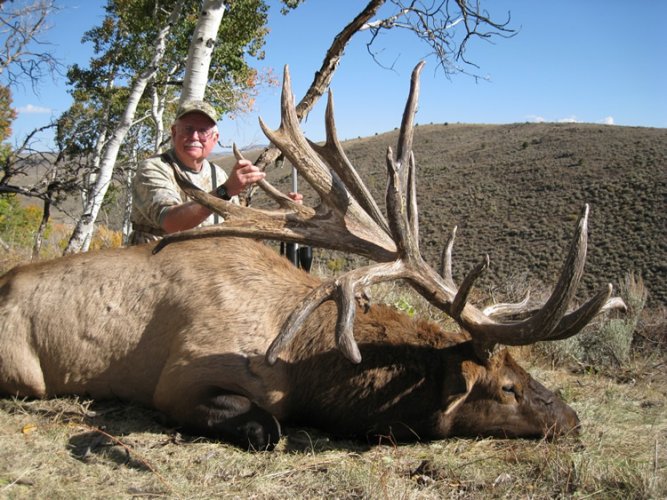
You know, the #FireBull probably would have grown up like the #SpiderBull if he hadn't been killed at such a young age.
You all are forgetting about the 100% wild, free-range #SpiderBull, aren't ya?

You know, the #FireBull probably would have grown up like the #SpiderBull if he hadn't been killed at such a young age.
ImBillT
Well-known member
- Joined
- Oct 29, 2018
- Messages
- 3,921
100% some red stag in that.I don’t want to get into the middle of the red/elk fight but the local bulls around my house have a group that have crown genetics. It’s not the extensive non-typical type but one or both antlers might have a three antler crown on top, including “spikes”.
Similar threads
- Replies
- 1
- Views
- 343






